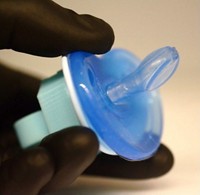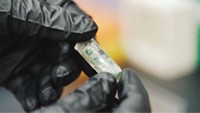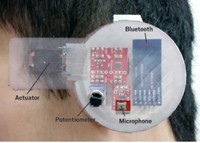Advertisement
Grab your lab coat. Let's get started
Welcome!
Welcome!
Create an account below to get 6 C&EN articles per month, receive newsletters and more - all free.
It seems this is your first time logging in online. Please enter the following information to continue.
As an ACS member you automatically get access to this site. All we need is few more details to create your reading experience.
Not you? Sign in with a different account.
Not you? Sign in with a different account.
ERROR 1
ERROR 1
ERROR 2
ERROR 2
ERROR 2
ERROR 2
ERROR 2
Password and Confirm password must match.
If you have an ACS member number, please enter it here so we can link this account to your membership. (optional)
ERROR 2
ACS values your privacy. By submitting your information, you are gaining access to C&EN and subscribing to our weekly newsletter. We use the information you provide to make your reading experience better, and we will never sell your data to third party members.
Diagnostics
Smart mask monitors breath for disease
Novel device harvests and analyzes breath to detect biomarkers
by Prachi Patel
August 29, 2024
| A version of this story appeared in
Volume 102, Issue 27

Exhaled breath contains water vapor bearing an array of compounds, including some that indicate diseases. A soft mask that analyzes breath to detect these biomarkers could let people easily monitor health at home (Science 2024, DOI: 10.1126/science.adn6471).
Sensing exhaled molecules typically requires bulky devices to condense the moisture in breath, says Wei Gao, a medical engineer at the California Institute of Technology.
Gao and colleagues created a wearable device that condenses breath using two cooling materials. One is a hydrogel that absorbs heat from breath and brings down temperature as the water in it naturally evaporates. The other is an alumina–polymer material that reflects sunlight and radiates heat into space. A microfluidic module containing hydrophilic channels and tiny pillars siphons the condensed moisture over an electrochemical sensor, which identifies analytes in the fluid, and on to the hydrogel to hydrate it. A small electronic circuit transmits sensor data to a mobile app via Bluetooth.
The mask could analyze breath continuously for 14 h, detecting pH, alcohol, ammonium, and nitrite levels, the latter of which can signify airway inflammation from asthma and other lung diseases. Gao says the sensor could be tailored to spot other diseases such as lung cancer and tuberculosis.
This work is a “tour de force,” says Peter Nguyen, a biochemist at Harvard University. “Essentially, you are wearing a laboratory that is monitoring your breath content.” To be cost effective, the team will need to simplify the system and increase the mask’s longevity, he says.





Join the conversation
Contact the reporter
Submit a Letter to the Editor for publication
Engage with us on Twitter